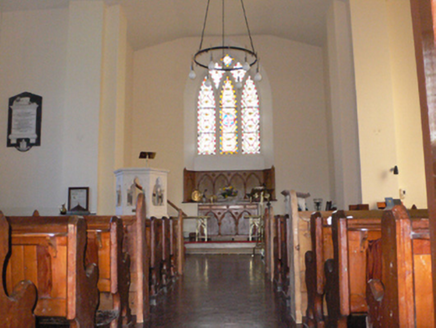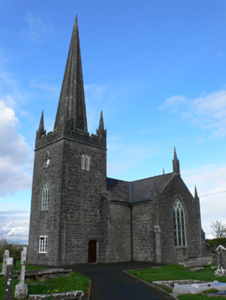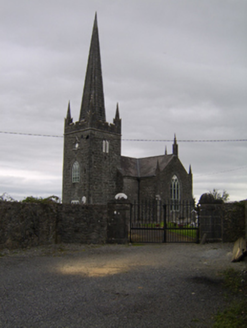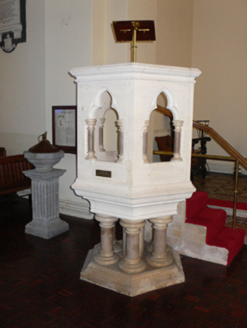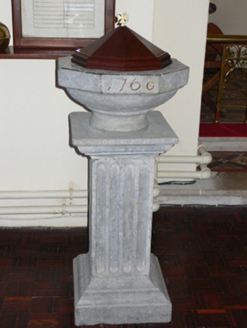Survey Data
Reg No
30408722
Rating
Regional
Categories of Special Interest
Architectural, Artistic, Social
Original Use
Church/chapel
In Use As
Church/chapel
Date
1815 - 1820
Coordinates
179054, 228218
Date Recorded
26/08/2009
Date Updated
--/--/--
Description
Freestanding cruciform-plan Board of First Fruits Church of Ireland church, dated 1817, of limestone, with square-profile three-stage entrance tower with spire to west elevation, and full-height chancel and transepts, with flat-roofed vestry to chancel. Pitched slate roofs with corbelled carved stone pinnacles to gables, cut-stone octagonal-profile spire with ribs and pinnacled crenellated parapet to tower. Cast-iron rainwater goods. Snecked dressed stone walls with pinnacled stepped canted corner buttresses to transepts. West face of tower has oculus opening to top stage with cut-stone hood-moulding and corbelled sill, middle stage has pointed arch traceried three-light window opening and bottom stage has square-headed triple window with pointed lights. Paired pointed arch openings to sides of top stage of tower, with timber louvres. Tudor-arch window opening to north side of bottom stage of tower with fixed timber window with cut-stone sill. Tudor-arch door opening to south side of tower with chamfered stone surround, stone threshold, and recent timber battened door. Similar door opening to vestry. Interior has rendered ceiling, carved timber altar and backdrop, carved marble pulpit and lectern, timber pews, stained-glass windows and marble wall plaques. Brass lectern and altar rails. Carved limestone font dated 1760. Headstones, table tombs and box tombs, some earlier than the church, to site. Double-leaf cast-iron gate with cut-stone piers with domed caps, rubble stone boundary walls.
Appraisal
Holy Trinity is a well composed attractive church with subdued detailing, the form and massing of which is typical of the Board of First Fruits. It retains its form, character and fabric and forms an appealing landmark in the locality with the finials to the roof and limestone spire providing visual incident to the skyline of Aughrim. Its wall monuments and adjoining graveyard are an important record of the history of the area.
